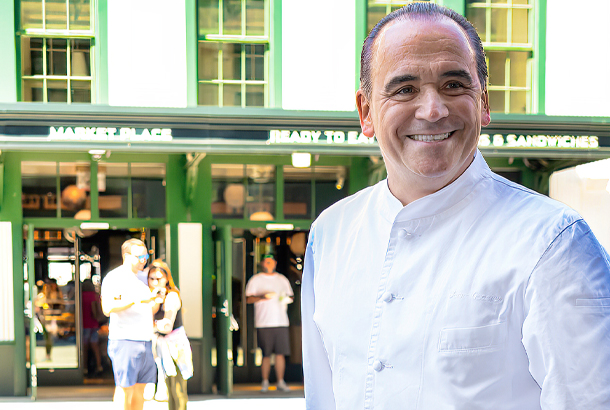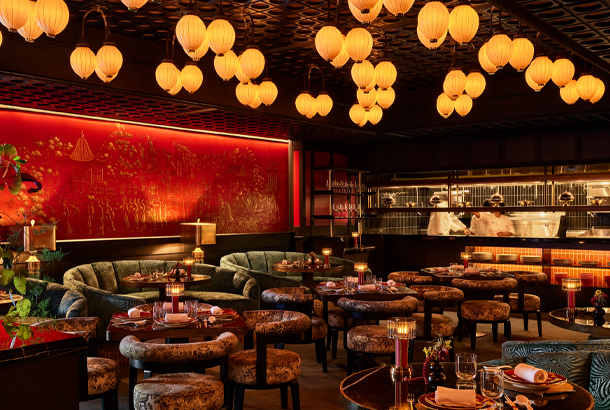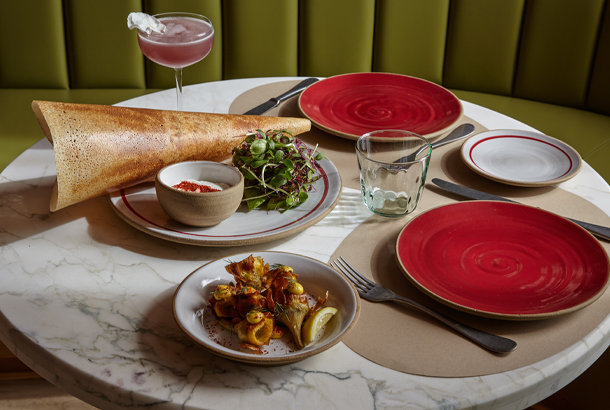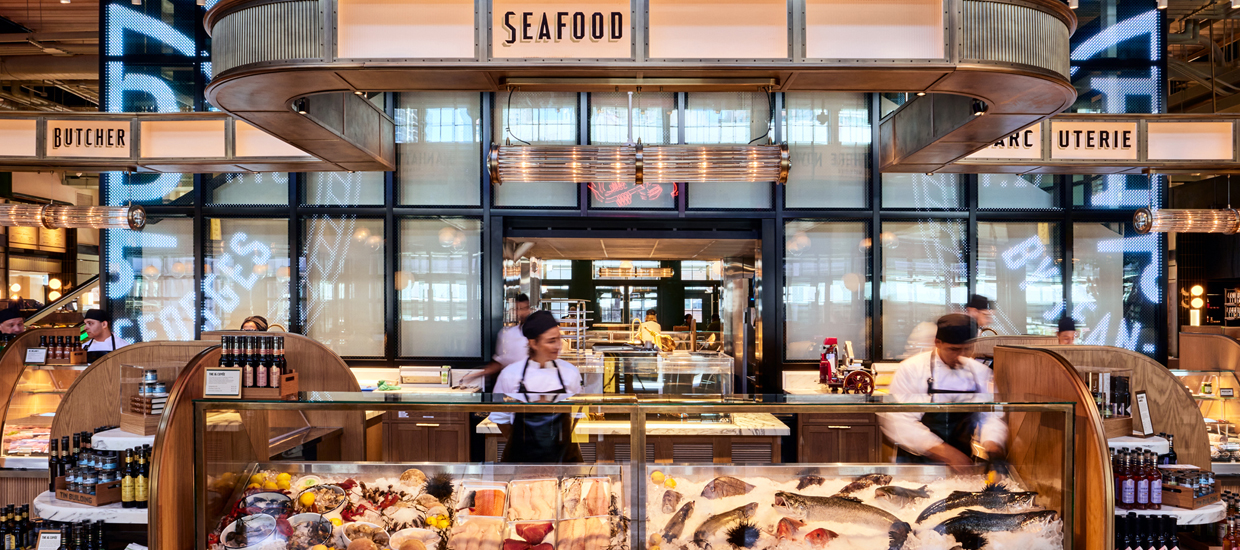Upon entering the Tin Building, the first thing a visitor sees is a counter selling fresh seafood: Faroe Islands salmon, Dover sole, Massachusetts razor clams. Beyond that counter are 12 restaurants, four bars, and several retail displays, but the fish take precedence. That was a conscious decision by Jean-Georges Vongerichten, as this building on Manhattan’s East River waterfront once housed the famed Fulton Fish Market.

“I arrived in New York in July 1986,” the French celebrity chef recalls. “I went to the market that next morning. I was still jet-lagged from Europe, so I woke up at 4 a.m. and jumped in a cab to the Fulton Fish Market. It was really a wild place, and a chef’s heaven, to find the beautiful fish from the East Coast, as well as from Europe, Africa, the Mediterranean.”

The market, which operated in the shadow of the Brooklyn Bridge for nearly 200 years, moved to a new location in the Bronx in 2005. As the Seaport area was redeveloped, Vongerichten agreed to consult on the conversion of the old space into a contemporary food hall. He signed up vendors, designed kitchens, and after about five years became a full partner in what is now called the Tin Building by Jean-Georges. The project, which took 10 years in total, was not a small one: In the wake of Hurricane Sandy, city officials said the building had to be moved back 32 feet and placed on a new concrete platform and pilings. Many of the structure’s features, however, were preserved.
“It was a landmark building, so we had to keep every nut and bolt on every cast-iron column,” Vongerichten says. “It was very important, because when you walk in, you really feel the DNA of old New York in here. Even if everything is new and rebuilt, I wanted to keep the feel of the market.”

The food hall, which opened late last summer, isn’t purely nostalgic, even if the design by the acclaimed firm Roman and Williams Buildings and Interiors includes vintage photos of market workers and quotes from Moby-Dick painted on the walls. The restaurants range from modern concepts—Double Yolk, which offers breakfast sandwiches in the morning and caviar at night; House of the Red Pearl, a Chinese-inspired speakeasy; and Seeds & Weeds, a greenery-filled space that serves vegetarian and vegan food—to classic ones, such as the Parisian-style T. Brasserie, the Shikku sushi bar, and the Fulton Fish Co. raw bar. This diversity, Vongerichten notes, is a sort of homage to the market’s contributions to the city’s culture. “
The place reflects New York,” he says, “because every community—from the Chinese to the French, Italian, everybody—was buying fish from the fish market.”




